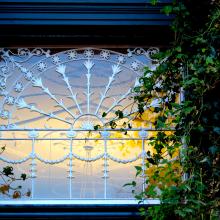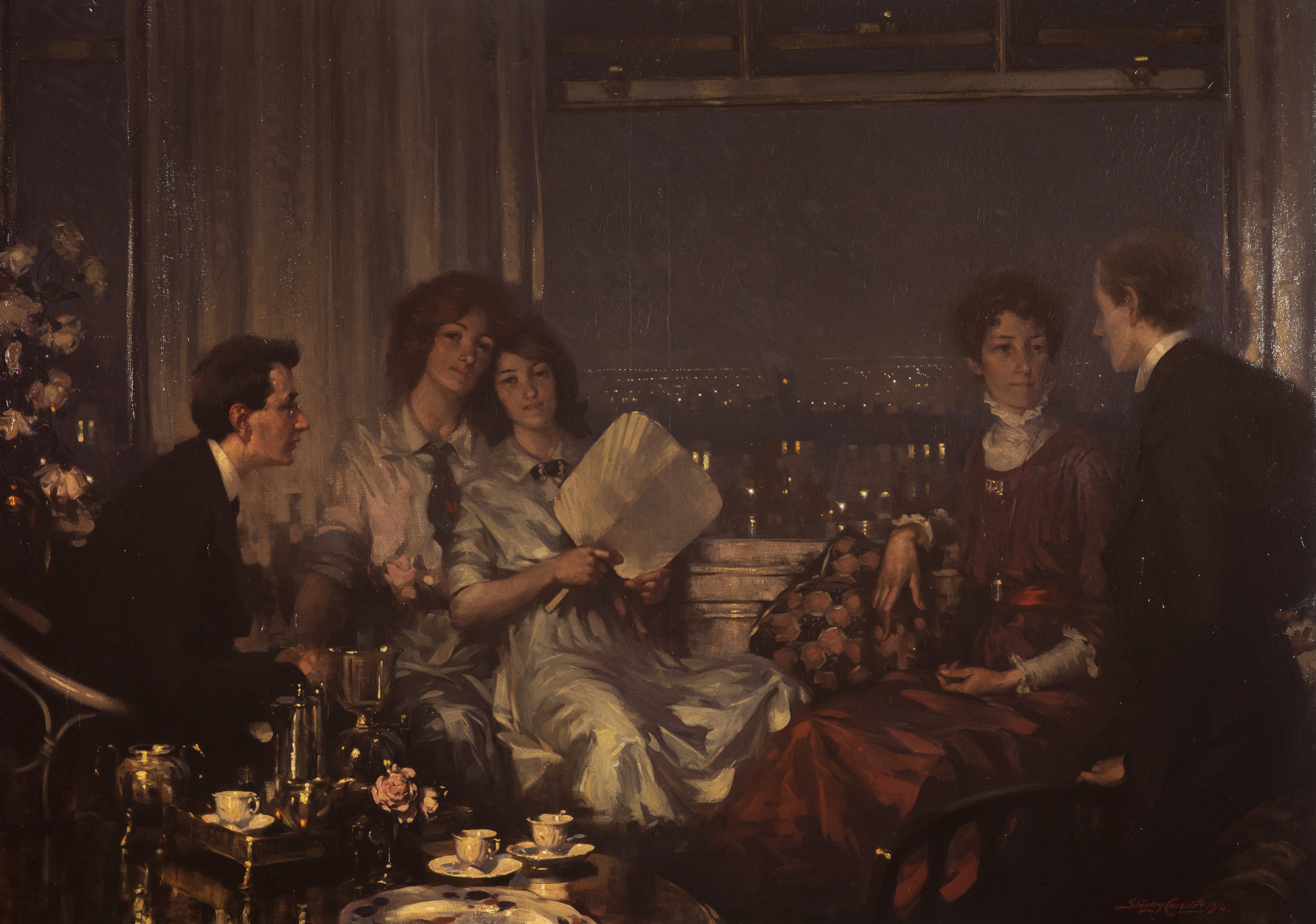
On a recent visit to the Scottish National Gallery, I came across a painting that I’d never seen before, writes Rhys Fullerton.
That’s not surprising as their collection is vast and often paintings have been on loan or in storage and haven’t been on display for some time. It’s possible that I’d seen it before and just didn’t really register it, but on this particular day it caught my eye.
It was located in the Impressionism section. I was there looking for another painting that I hoped to write about, but it wasn’t on display. This painting stood out because it wasn’t in the style of an Impressionist work. Nestled between van Gogh, Degas, Gauguin, Monet and Cézanne was this large depiction of five people sat in an apartment while the city lights sparkled in the distance.
I thought it must have been displayed in this room to show an Impressionist’s attempt at a different style, or that it was possibly a portrait of the artist’s family. I was wrong. I was sure that given its position in the Impressionism section, it must have been an apartment in Paris but again I was wrong. This painting, Twilight (1914), was of Scottish origin and on closer inspection it emerged that it was set in Edinburgh. To be precise, it was painted in a studio at 28 Queen Street by Sir Stanley Cursiter.

No. 28 Queen Street is now home to The Scottish Malt Whisky Society, but was once Cursiter’s studio. He adopted many different styles throughout his career, including Cubism and Vorticism. The superb Rain on Princes Street (painted in the year before Twilight) shows how Cursiter was influenced by the Futurist movement and is very different again.
Cursiter was Director of the National Galleries of Scotland from 1930–48. He played an important role in introducing Post-Impressionism to Scotland (which could explain why this work was in this particular room), and he was influential in the campaign to create the Scottish National Gallery of Modern Art. He resigned as Director of the NGS because he wanted to spend more time painting.

What’s striking about this image is how it conveys such a relaxed atmosphere. The subjects seem at ease, enjoying each other’s company at twilight. The window is open, which suggests that it was painted during the summer, possibly prior to the First World War's start in July 1914.
Although this is more traditional than his other works during the same period, he did adopt a more realist style after the war, and this painting might have ended up very different if it had been painted a few years later. Unbeknown to the artist at the time, this was the calm before the storm that would soon change the world.
The New Town has been home to many artists and I shouldn’t be surprised that a painting like Twilight is in the Scottish National gallery’s Collection. Perhaps I was taken aback because I’ve walked past 28 Queen Street so many times in the past and was unaware of its history.
It's often when you’re looking for something in particular that you find something unexpected in its place, and what a find this was! In Twilight, Cursiter manages to capture a gentle moment in time, set in our very own part of Edinburgh.
The backdrop is still very familiar today, but the times have certainly changed.

Painting image: Sir Stanley Cursiter, Twilight, 1914 (Oil on canvas, 152.50 x 214.00 cm), Scottish National Gallery collection.
----------
@theSpurtle Fascinating stuff from RF. 'Rain on Princes Street' is a wonderful painting.
 New Town Flâneur @NewTownFlaneur
New Town Flâneur @NewTownFlaneur
@theSpurtle I do, however, wonder how the subjects can be at ease, enjoying each other’s company?? It's the New Town, for heaven's sake.
Email from David Philp: Not sure about summery interpretation. That window looks closed. City beyond: wet and wintery. Japanese fan could be to protect complexion from bottom-left to top-right firelight not June heat. Edwardian plate-glass lower pane could be interpreted as wonderful modern draught-proof barrier against horrible old drizzly Embra Philistine shite-hole beyond.